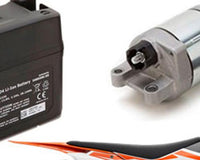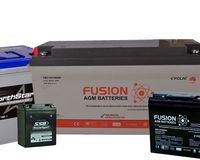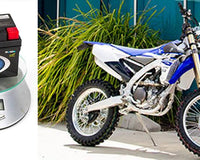Table of Contents
Eneloop Rechargeable Batteries has been on a mission to create a sustainable future for over 15 years. Over time, Panasonic has improved its performance, making them last longer, more convenient to use, and environmentally friendly than single-use batteries.
What is an Eneloop battery?
Eneloop batteries are NiMH batteries that may be recharged. They're known for having incredibly low self-discharge properties. This indicates that they can hold a charge for long periods than other rechargeable batteries. Unlike their competitors, these batteries can also generate a lot of power.
Eneloop History
November 14, 2005 – Sanyo introduced Eneloop, and became a registered trademark. It quickly gained popularity because of its recharging capabilities that outperformed its competitors. In addition to that, the production of C and D batteries has expanded by 2007.
By June 2010, Eneloop started to produce its “lite” version. Because it is less susceptible to increased internal resistance, the battery is ideal for low-drain devices. Fast forward to April 26, 2013, Eneloop was successfully acquired by the Panasonic brand.
The next year, Panasonic started the manufacturing process in China. The China-made Eneloop batteries were made available to the Asian market, including Australia and New Zealand. On the other hand, the Japan-made batteries were made to be available to the Japanese, European, and North American markets.
In 2016, Panasonic supplied 400 million Eneloop batteries around the world.
Difference Between Eneloop Standard, Pro, and Lite
Standard
It's worth noting that the basic white model can be used in nearly any setting. They're durable enough to withstand strong discharge currents, such as those seen in bright spotlights and remote-control cars.
In almost all circumstances, you can't go wrong with conventional models because of their life cycle rating of up to 2,100. They have a minimum capacity of 1900mAh for AA batteries and 750mAh for AAA batteries.
They are suitable for remote control cars, cameras and camera flashes, flashlights, radios, and a variety of other items.
Pro
These are the ones to obtain if you require additional power and capacity. In their lineup, it's known as the “pricier” battery. With an LSD rating of 85 percent in one year, it has the highest capacity. However, they are only rated for at least 500 cycles because they’re a high-capacity cells.
Another factor to consider when purchasing these Pro batteries is that they are somewhat broader than the standard Eneloop, which may cause them not to fit well in the devices. Sanyo has already stated that the AA to D size spacers will not fit. However, their most recent Panasonic upgrade may have changed this.
For powerful devices such as strobe lights, the Pro batteries are highly recommended. But, keep in mind that these are not advised to be used for devices like cordless phones that require a continuous charging current.
Lite
Because cordless phones normally sit in a charging cradle with a constant trickle charge, these are the only batteries that are actually recommended. These cells have a total capacity of 950 mAh for the AA and 550 mAh for the AAA and are evaluated to last for up to 3000 cycles (Japan-manufactured Eneloop) or 5000 cycles (China-manufactured Eneloop).
FAQs
- Why are Eneloop batteries considered the best among other rechargeable batteries?
Eneloop's revolutionary technology maintains a continuous power flow, therefore they don't lose voltage quickly when you're using them. As a result, the Eneloop Pro batteries surpass their alkaline equivalents significantly.
- Where should I store my Eneloop batteries?
It’s best to keep them in a cool, dry location. Not in an extremely hot, humid or damp climate.
- Is it okay to mix my Eneloop batteries with other battery types like Alkaline?
Mixing rechargeable and alkaline batteries is not a good idea. The most important thing to remember is that gadget that require numerous batteries, only use matching cells.
- Why is the battery cycle shorter in Eneloop Pro?
They do, over hundreds of cycles, build up internal resistance. As a result, they are unable to generate sufficient power output. It has to do with the size of the positive and negative electrodes. The “positive” refers to capacity, while the “negative” refers to the life cycle.










